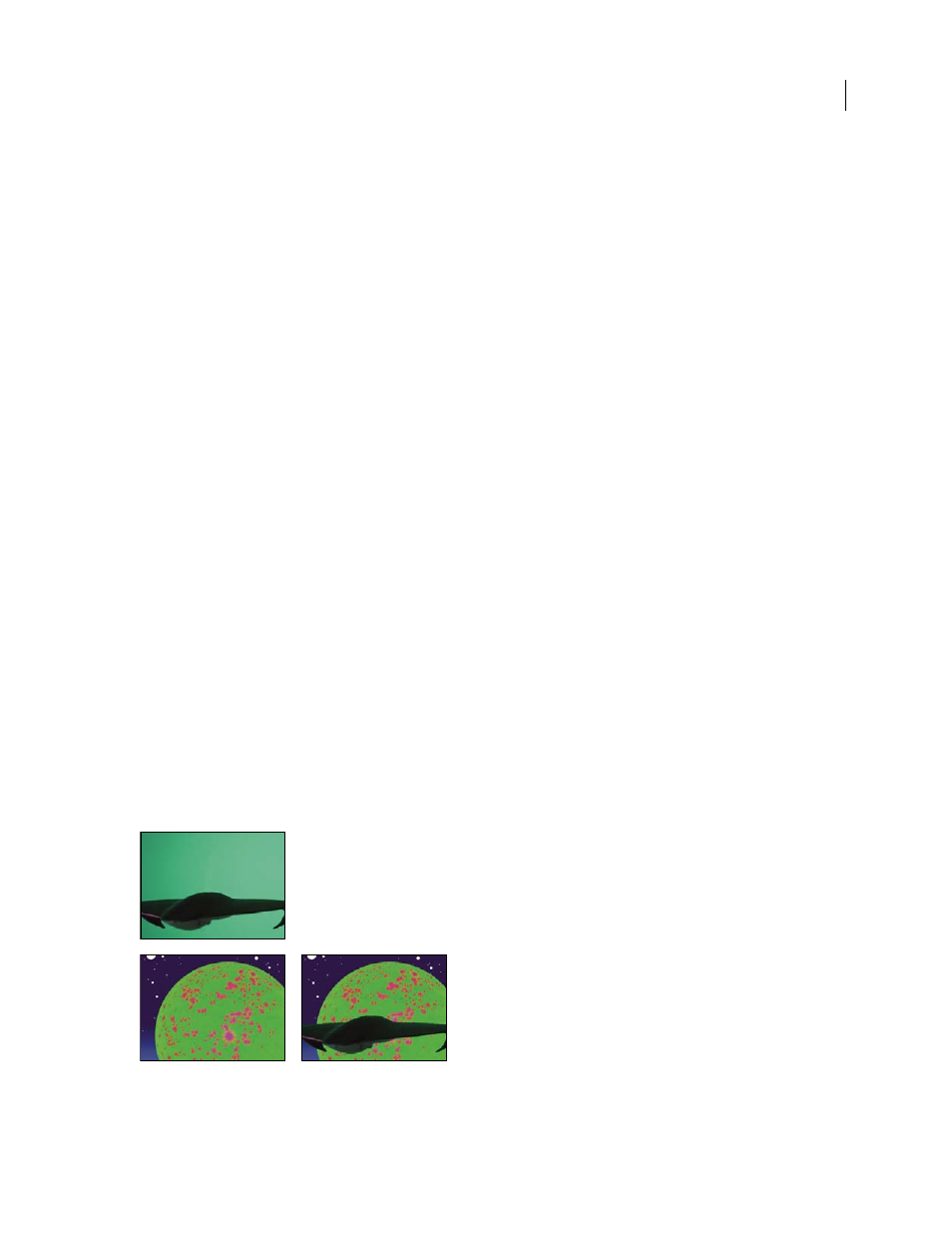Color key effect, Color range effect – Adobe After Effects CS3 User Manual
Page 447

AFTER EFFECTS CS3
User Guide
442
Color Key effect
The Color Key effect keys out all image pixels that are similar to a specified key color. This effect modifies only the
alpha channel of a layer.
This effect works with 8-bpc and 16-bpc color.
See also
“Keying overview and tips” on page 268
“Matte Choker effect” on page 450
“Simple Choker effect” on page 451
Key out a single color with the Color Key effect
1
Select the layer.
2
Choose Effect > Keying > Color Key.
3
In the Effect Controls panel, specify a key color in one of two ways:
•
Click the Key Color swatch to open the Color dialog box and specify a color.
•
Click the eyedropper, and then click a color on the screen.
4
Drag the Color Tolerance slider to specify the range of color to key out. Lower values key out a smaller range of
colors near the key color. Higher values key out a wider range of color.
5
Drag the Edge Thin slider to adjust the width of the keyed area’s border. Positive values enlarge the mask,
increasing the transparent area. Negative values shrink the mask, decreasing the transparent area.
6
Drag the Edge Feather slider to specify the softness of the edge. Higher values create a softer edge but take longer
to render.
Color Range effect
The Color Range effect creates transparency by keying out a specified range of colors in either the Lab, YUV, or RGB
color space. You can use this key on screens that consist of more than one color or on bluescreens or greenscreens
that have been unevenly lit and contain different shades of the same color.
This effect works with 8-bpc color.
Poorly lit greenscreen (top left) and background layer (bottom left) are combined using Color Range Key (bottom right).
